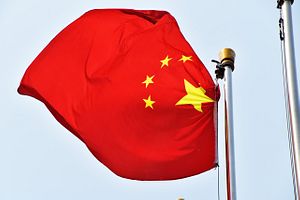Is China moving from being the “factory of the world” to being the “builder of the world”? Its hugely ambitious Belt and Road initiative (BRI), with massive infrastructure projects in all four corners of the world, certainly makes it looks so.
On April 26 and 27, President Xi Jinping will host world leaders in Beijing for a Belt and Road Forum extravaganza during which participants are sure to announce mind-boggling investment figures, unveil ambitious bilateral agreements, and extol “win-win” cooperation.
But missing from the summit will be the purported beneficiaries themselves: the communities and people who will be directly impacted by these mega-projects.
Promises of “green growth” and “sustainable financing” contained in the Belt and Road Forum draft communique are welcome; however, if these commitments are to be realized then lessons need to be learned – and quickly – from the mistakes of Chinese investment projects already underway.
Take the communities in southern Vietnam’s Binh Thuan province, who certainly don’t feel like winners following China’s $1.75 billion investment to build the 1,240-megawatt Vinh Tan-2 power station.
The lucrative coal-fired power plant, completed in 2014, has resulted in a dramatic increase in pollution in the local area. When thousands of local residents blocked the National Highway in 2015 to protest against the dirty air, police responded by firing tear gas at the peaceful demonstrators. Seven protesters were later jailed in connection with the unrest.
The potential health and environmental impact on the community was laid bare in a Vietnamese state audit issued in March 2019, which exposed “great environmental risks” related to the discharge of ash, as well as illegally high levels of nitrogen oxide emissions, illegal discharge of waste water into the sea, and inadequate environmental supervision at the power plant.
The troubles at Vinh Tan and elsewhere, such as China Development Bank’s deal to invest $4.7 billion into two dams in Argentina’s pristine Patagonia region, highlight the dangers of developing a multi-billion-dollar infrastructure project without consulting the local community about it first.
Critics of the two Santa Cruz Hydroelectric Dams in Argentina allege the project was carried out without consent from indigenous communities and without proper environmental impact assessments – something critically important in a project that could affect UNESCO World Heritage glaciers and endangered species.
Both projects were initially hailed as shining examples of China’s successful investment and “win-win” economic development. While such projects may make many skeptical of commitments for green and sustainable growth coming from Beijing this week, this is not to say that all BRI projects are not needed.
The global “infrastructure gap” – the difference between demand for and supply of the transport, energy, and communications networks needed to sustain current levels of economic growth – is massive. Analysts estimate that $3.3 trillion needs to be spent on infrastructure investment each year until 2030 to maintain the global economic growth trajectory. To the extent that the BRI helps to address that gap, it is a welcome addition to other sources of investment provided it is appropriate and sustainable.
Foreign investment within and across regions can increase economic productivity and raise living standards. Done right, infrastructure has the potential to help states realize their human rights obligations by delivering, for example, better access to food, sanitation services, clean water, and employment opportunities. But highways, dams, and power plants also have the potential to tear communities apart and result in people being forcibly removed from their homes and land without adequate safeguards.
Part of ensuring that projects are sustainable comes from giving the communities that are most affected a say in how those projects are designed and implemented. This requires being transparent about plans and risk assessments and seeking meaningful input from a variety of stakeholders. It also means demonstrating to people that their concerns will be taken seriously, and that when issues are exposed they will be resolved fairly and effectively.
Independent local nongovernmental and community-based organizations serve as key conduits through which communities can communicate their concerns to project stakeholders.
That is why the leaders gathered at this year’s BRI Forum should commit to instituting regular stakeholder forums in all regions where BRI projects are being implemented or planned.
This may not be as straightforward as it sounds. The Chinese government views domestic civil society with suspicion and sees it as something that needs to be strictly controlled.
China’s Foreign NGO Management Law severely limits what nongovernmental organizations can do within China’s borders, making it hard for representatives of civil society to travel to Beijing compared to the ease with which national government leaders can. In the absence of China adopting a less repressive stance, in line with its human rights obligations, one interim solution could be to hold forums in each region, which could have the added benefit of encouraging local participation.
Above all else, however, engagement of people directly affected by the BRI needs to be meaningful. Civil society stakeholders won’t be seduced by grand visions and promises of benefits when it’s clear they will have no chance to voice concerns and have them taken seriously in influencing policy and individual projects.
Despite the sloganeering, there are always likely to be some who lose out when it comes to building mega-infrastructure projects. However, those who are at risk of human rights violations must be given a platform to demand protection of their rights and mitigate potential harm and risks.
That principle may not be the most important thing on the minds of those leaders taking part in the BRI Forum, but for communities like those in Santa Cruz and Binh Thuan province, and the countless others that will be directly impacted by China’s projects, human rights will continue to matter.
Joshua Rosenzweig is Head of East Asia at Amnesty International.

































